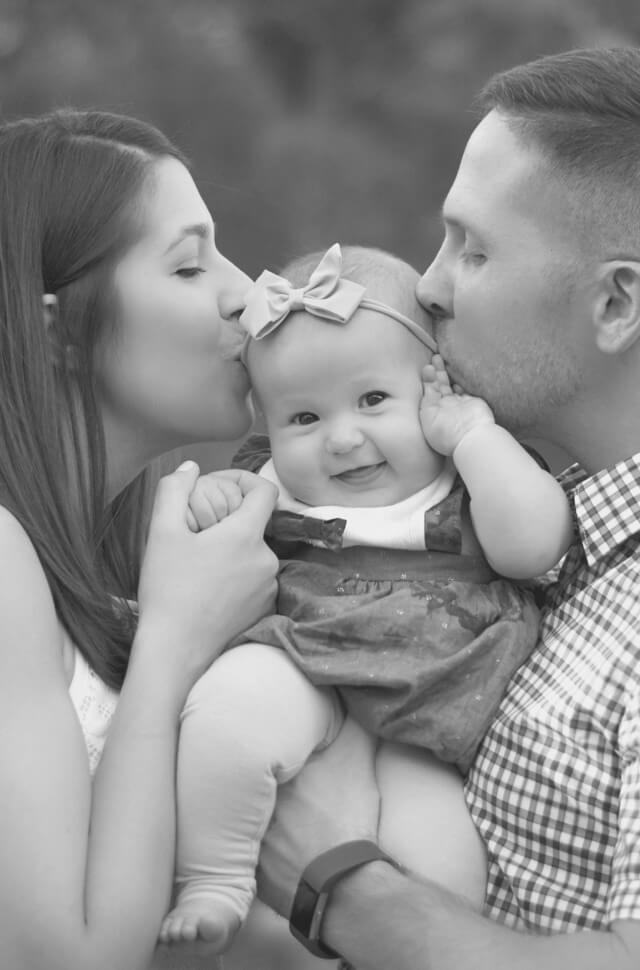Best Country For Cheap IVF Treatment
What Is IVF?
IVF treatment gives families with no children the option of having children. IVF treatment begins the pregnancy process in a lab environment, instead of increasing fertility by drugging patients. In this case, the reproduction-related mother and father samples are combined in the lab and placed in the mother’s uterus. This makes it easy for couples who want to have a baby to hold their own baby. IVF is one of the most commonly used treatments. In this article, you will learn the answers Where Is The Cheapest IVF in the world? How is IVF done? What are the 4 stages of IVF? What is the success rate of gender selection? etc.
How Is IVF Done?
IVF is one of the most widely known types of assisted reproductive technology (ART). IVF works by using a combination of drugs and surgical procedures to help sperm fertilize an egg and help fertilize the egg implant in your womb.
First of all, you will take drugs that mature and are ready to fertilize most of your eggs. The doctor then takes the eggs out of your body and mixes them with the sprinkling in the lab to help spread the eggs. They then put 1 or more fertilized eggs (embryos) directly into your uterus. Pregnancy occurs if there are any embryo implants in the uterus lining.
The IVF has several steps, and the entire process will take several months to complete. Sometimes they do it first, but a lot of people need more than one round of IVF to get pregnant. IVF certainly increases your chances of pregnancy if you have fertility problems, but there is no guarantee – everybody is different and IVF does not work for everyone.

What Are the 4 Stages of IVF?
Ovarian stimulation:
Increased availability of mature eggs for fertilization increases the chances of pregnancy. Since a woman’s body normally releases only one mature egg every month. Some medicines are used to prevent the early release of eggs, while others are used to stimulate the ovaries to develop more ovarian follicles. The medications also control the timing of ovulation to make it easier to retrieve the eggs.
Egg Retrieval:
Once the ovary stimulation has finished and the follicles have matured, your doctor will try to retrieve as many eggs as possible, although all the eggs may not be used in the current IVF
cycle. Egg retrieval is carried out under mild sedation, local anesthesia or, in some cases,
general anesthesia.
Mature follicles are identified using ultrasound and then a needle
is passed through the vagina to draw the liquid from the mature follicle with gentle suction.
The fluid is immediately examined under a microscope to see if an egg has been retrieved.
The process is repeated for each mature follicle in both ovaries. All retrieved eggs are removed
from the follicular fluid and placed in an incubator.
Fertilization:
Approximately two hours prior to egg recovery, a sperm sample is taken from the male partner and processed to select the strongest, most active sperm. The sperm are then positioned with the eggs in an incubator placed at the same temperature as the body of a woman. The next day,
eggs are examined microscopically to determine whether fertilization has occurred. If
it has, the resulting embryos will be prepared to be transferred to the womb a few days later.
Embryo Transfer:
Step 4 of the FV process Embryo transfer is not a complicated procedure and can be carried out without anesthesia. The embryos are put into the tubing and transferred to the uterus. How many embryos you transfer depends on one woman’s age, cause of infertility, pregnancy history, and other factors. If there are additional embryos that are of good quality, they may be frozen (cryopreservation) for later use.

What Are The Side Effects Of IVF?
While IVF treatments are likely to be successful, they can often lead to challenging times for expectant mothers. During IVF treatments, pregnant women will go through a very painful process that will continue following embryo transplants. Therefore, precautions need to be taken and patients can experience the following effects after embryo transfer:
- Mild cramping
- Mild bloating
- Breast tenderness
- Constipation
- Leaking a small amount of clear or blood-tinged fluid after the procedure
- Headaches
- Abdominal pain
- Abdominal bloating
- Mood swings
- Hot flashes
- Ovarian hyper-stimulation syndrome
How Long Does IVF Take to Get Pregnant?
It is one of the most asked questions ”How Long Does IVF Take to Get Pregnant?”
In IVF, sperm and egg are combined in a laboratory dish—this is the “glass” in the name—incubated, and carefully monitored throughout the fertilization process. Over a period of 3-5 days, the fertilized eggs are transformed into embryos. Next, the quality of the embryo is examined for later transfer, freezing or culturing, and development.
For the female, however, the IVF process actually begins weeks earlier. IVF is not just one treatment, but a series of processes. An average IVF cycle takes about six to eight weeks between consultation and transfer, but depending on the specific circumstances of each patient, the path is similar for each patient and what changes the way your body reacts at each stage.

Are IVF Babies More Likely to Be Male or Female?
You’re three to six percent more likely to have a baby boy than a girl when you use IVF to conceive. IVF increases a boy’s chance by 51 out of 100 when designed naturally in 56 out of 100 with IVF. Up until recently, we have not known why. Recent research illuminates why IVF produces more boys than girls and suggests potential solutions.
What Are The Success Rates For IVF?
The success rate of IVF depends on the age of the woman being treated, as well as the cause of fertility (if known).
Younger women have a higher probability of having a successful pregnancy.IVF is generally not recommended for women over the age of 42 because the likelihood of a successful pregnancy is considered too low.
- 35% for women under 35.
- 30% for women aged 35 to 37.
- 24% for women aged 38 to 39.
- 16% for women aged 40 to 42.
- 9% for women aged 43 to 44.
- 5% for women aged over 44.
Can you Choose Gender in IVF?
Intended Parents can determine gender through PGD/PGS/PGT-A during an IVF journey. Given a fertility doctor’s ability to identify the XX or XY chromosomes in the embryo with PGD tests, the gender selection process is nearly 100% accurate.
However, not all patients are able to produce healthy embryos of the desired sex due to factors associated with age, egg supply, and sperm quality. In these cases, donor sperm or egg donation is an option for affected parents who want to choose their sex.

What Is Gender Selection?
Gender selection is a medical technique used by parents who wish to select the sex of their offspring. Gender selection is carried out by means of sperm separation or genetic testing. The embryos with the desired gender are then implanted into the woman’s womb.
How Does Gender Selection Work?
The sex of an embryo is determined by the chromosomes conveyed by the sperm. Sperm can have the X chromosome or the Y chromosome, whereas a woman’s egg only has the X chromosome. When an X chromosome is obtained from both the sperm and the egg (XX), a female is produced. When sperm delivers a Y (XY) chromosome, a male is produced. When conception occurs naturally, you have one in two chances of having a daughter or a boy. To increase these ratings in one direction or another, consider IVF with gender selection.
The gender selection process starts in a controlled laboratory. With a microscopic glass needle and laser, only one cell is removed from the embryo without causing any harm. The genetic composition of the cell is then analyzed microscopically to determine gender. The general quality of the embryo can also be determined at that point. High-quality embryos of the preferred gender are then transferred into the uterus.
You can see the information about the cheapest IVF countries below:

Where Is the Cheapest IVF in the World?
Where Is The Cheapest IVF in the world? Why do patients travel abroad to undergo IVF? Because there are some reasons such as National legislation restricting access to egg donations and egg donation programs. The age limit of the recipient of eggs may be higher in foreign countries, providing treatment even to patients aged 55.
Types of egg donor IVF arrangements. Many patients are seeking IVF clinics abroad because of the policies and practices of anonymous egg donation in their home countries. High costs for IVF, IVF ICSI, or IVF with donor eggs in their home country. Foreign fertility clinics provide high-quality treatment with higher IVF success rates. If you wonder about the answer to the question Where Is The Cheapest IVF in the world? You can see the countries below:
- Dubai
- United States
- Thailand
IVF Gender Selection in Dubai
How much does IVF cost in Dubai? Is it the cheapest IVF country in the world? Dubai is among the countries in which gender selection is legal, and has successful doctors in medicine. The prices of IVF range from €7.000-€9000. When it comes to how much gender selection in Dubai? The minimum amount that patients who want to have a baby with a gender selection in Dubai should pay for the clinic is €12000 to €17000.
With consultation and payment of many other tests, prices can vary depending on the clinics and other reasons. In addition, due to the Dubai climate, it is not much preferred. If you are not accustomed to the very hot weather, it may cause some problems for you.
IVF Gender Selection in the U.S
The U.S has also developed in health and is among the developed countries with experienced doctors, Is it the cheapest IVF country in the world? No. The U.S is a slightly higher price than other countries, so the preferred rate is lower than other countries. How much does IVF cost in the U.S? The average IVF cycle can cost between $13,000 and $19,000 (not including drugs). With medication, the cost can be closer to $25,000. In addition, € 4250 to €5000 is required for gender selection.
IVF Gender Selection in Thailand
Is it the cheapest IVF country in the world? Thailand is a highly developing and highly satisfied country in health, that is why a lot of people visit Thailand every year. Besides, Thailand is available with advanced new model medical supplies. When it comes to how much IVF costs in Thailand? The prices of IVF are €4000 to 4250. This price is approximately fifty percent cheaper compared to other countries and you can save money in this way. If you wonder how much does gender selection in Thailand? The price of IVF+Gender Selection is €7500.
Additionally, this process is more convenient for individuals who want to accommodation package. It includes:
- Round-trip flight ticket for 2 ( air tickets only cover domestic flights )
- Hotel, 7 nights full board
- Taxi transfers and PCR fees included €2000
For more detailed information about the treatment, you can contact us 24/7. Our advisors will be waiting to answer the questions you have in mind.


